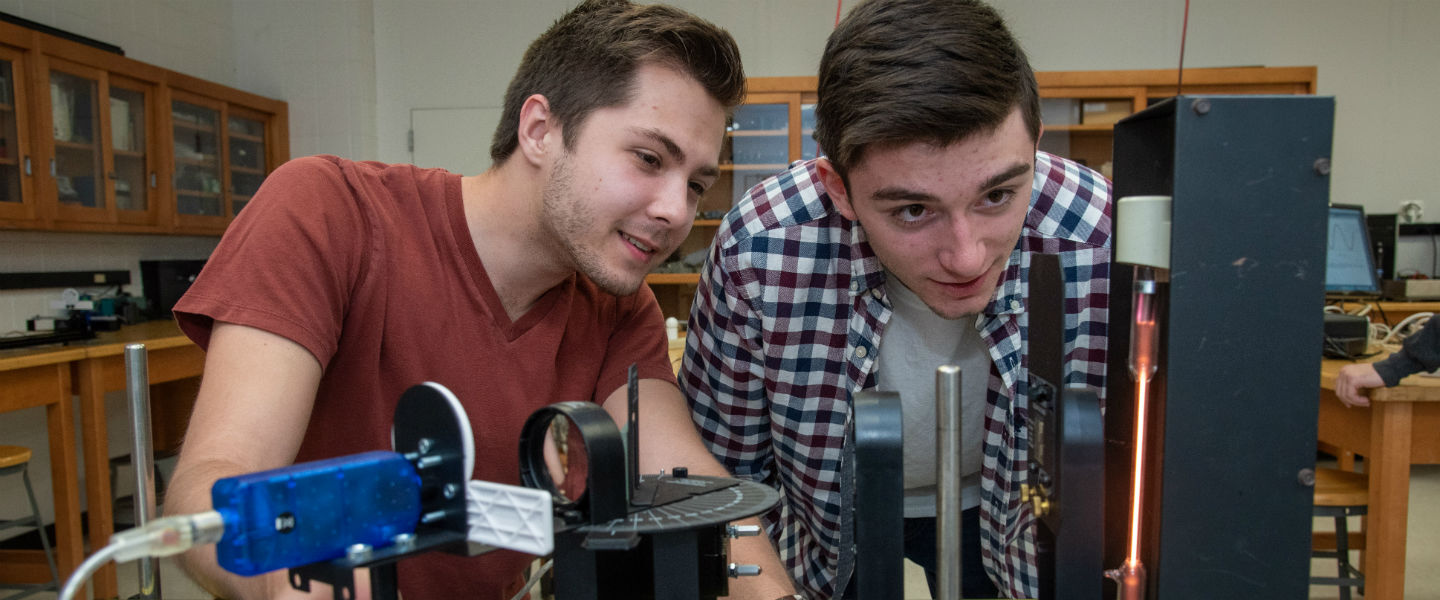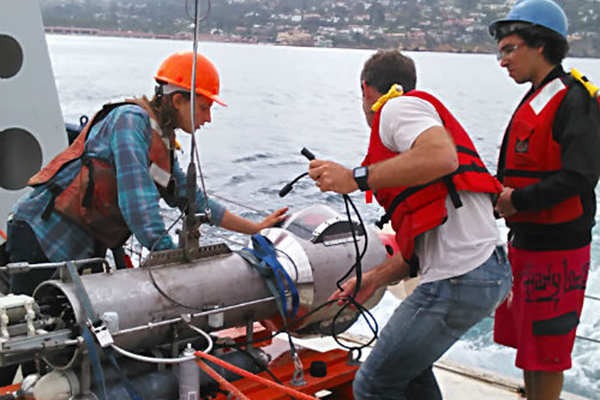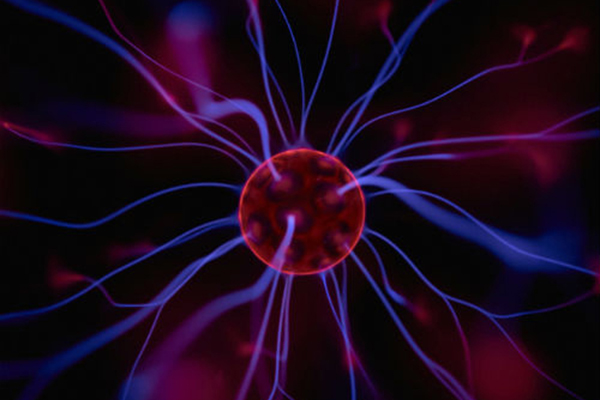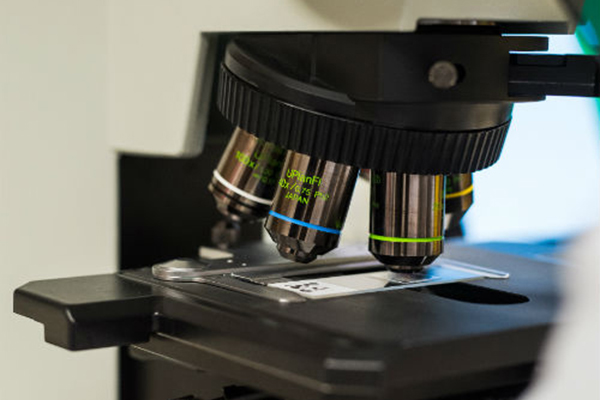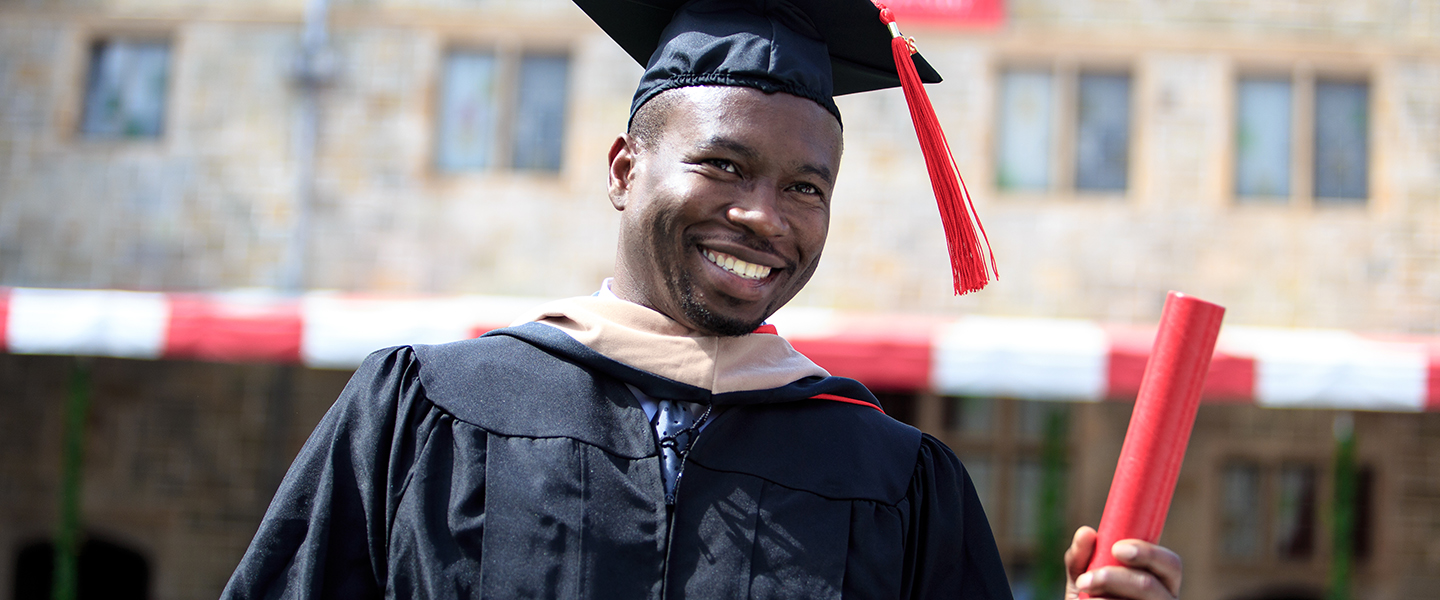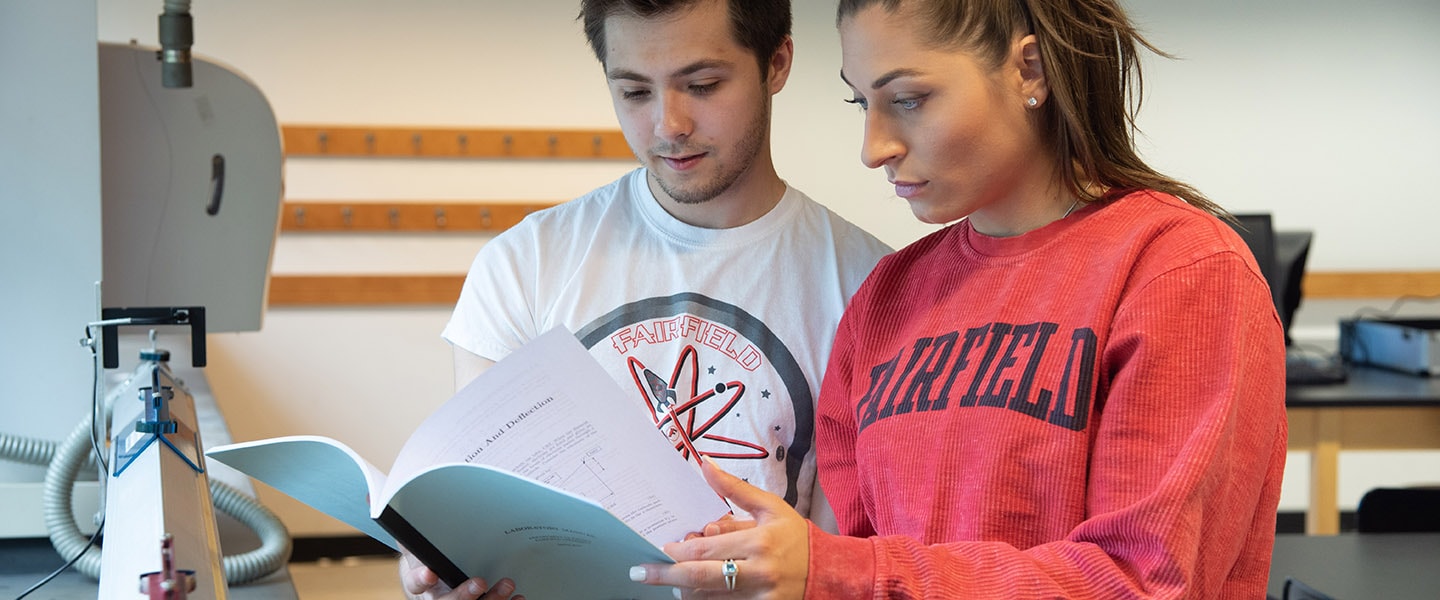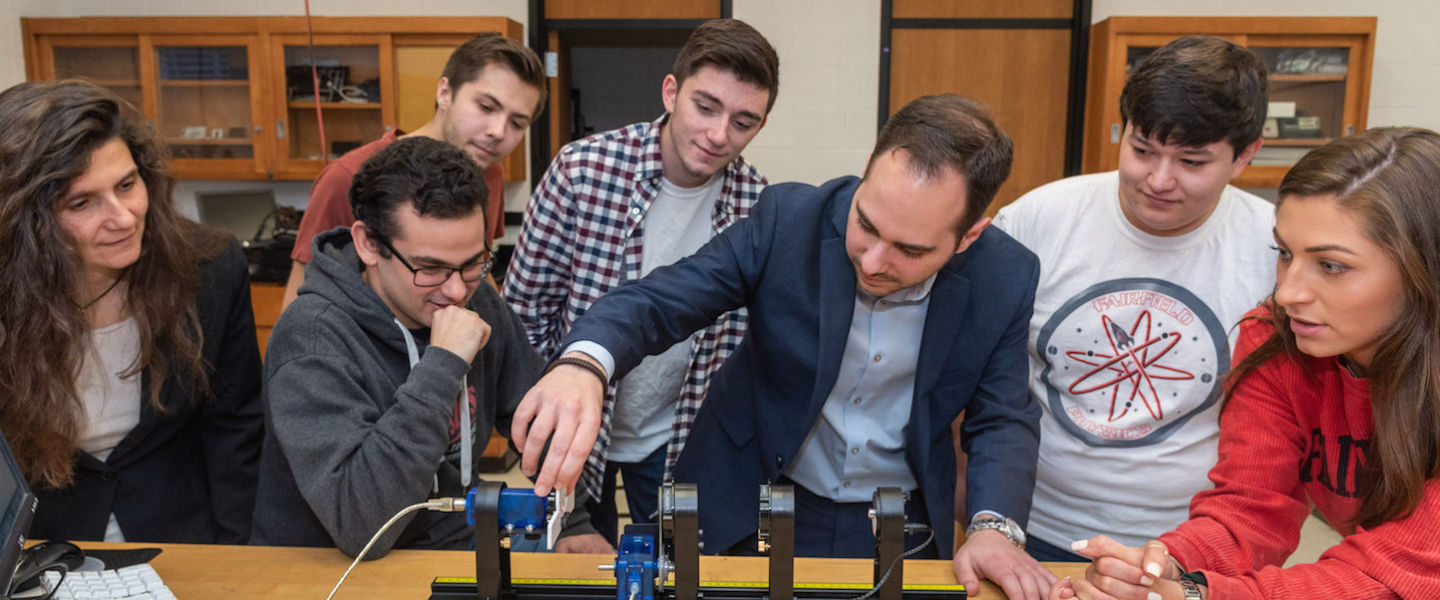On This Page
Program Overview
Physics can explain the answers to your questions about much of our universe and how it works because physicists help us better understand the world in which we live by studying natural phenomena in the universe — all the way to its outer limits.
Research is a large part of our physics program. We give you all the tools to apply physics to today’s most compelling questions. Our research program promotes the analytical skills of physics students, and enables them to solve complex problems, think critically, conduct experiments, analyze data and communicate scientific ideas easily and effectively. As a result, our students have gone on to receive some of the most prestigious awards and fellowships in physics and STEM.
With a major in physics, the door is wide open to careers in physics research, engineering, health, computer science, medicine, law, and education. If you’re considering graduate school, the physics program at Fairfield University will prepare you for that too!
Physics at Fairfield University
Contact Us
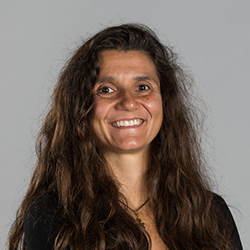
Angela Biselli
Department Chair
Physics
x2192
Office of Undergraduate Admission
P: (203) 254-4100
F: (203) 254-4199
admis@fairfield.edu
Requirements & Curriculum
Required Courses
| General Physics I & General Physics I Lab |
| General Physics II & General Physics II Lab |
| Classical Mechanics |
| Modern Physics |
| Modern Experimental Methods Lab |
| Computational Physics |
| Thermal and Statistical Physics |
| Electricity and Magnetism |
| Quantum Physics |
| Theoretical/Experimental Capstone |
| Five (5) semesters Math (3 Calculus; 1 ODEs; 1 PDEs) |
| Two (2) semesters General Chemistry |
| Specialized Tracks (selected at the end of sophomore year): General Physics, Education, Health Studies |
| General Physics I & General Physics I Lab |
| General Physics II & General Physics II Lab |
| Modern Physics |
| Modern Experimental Methods Lab |
| One (1) additional 2000- or 3000-level Physics course |
A detailed list of course requirements, offerings, and more can be viewed in the University’s course catalog.
Faculty-Student Research
The College of Arts and Sciences empowers and encourages undergraduate students from all disciplines to conduct innovative, in-depth, and collaborative research under the guidance and encouragement of faculty experts. Each year, more than 300 faculty-student research projects are conducted in the areas of STEM, the humanities, arts, and social sciences, more than half of which are presented at national scholarly meetings and/or published in professional journals and manuscripts.
After sophomore year, physics majors have the opportunity to work as research assistants during the academic year or the summer months. During the summer, research assistants receive a salary for their intern work and gain invaluable experience in the laboratory while making worthwhile contributions to faculty research activities .
Over the last few years, students have participated in studies of:
- The physical properties of diamond films
- The construction of calorimeter models for elementary particle detection systems
- Photoluminescence of porous silicon and other advanced materials
- Transport phenomena in semiconductors
- Neutron activation analysis and gamma-ray analysis applications in environmental science studies.
Check out some of our recent physics research projects below, then visit the College of Arts and Sciences undergraduate research webpage to learn more.
Impact of Ocean Mixing in Submarine Canyons
Physics majors Christian Burns ’20 and Jordan Hamilton ’22 participated in a summer long research study alongside Assistant Physics Professor Robert Nazarian, PhD, on the global impacts of ocean mixing in submarine canyons. Often tens of miles long, submarine canyons are suggested to be regions of intense ocean mixing, a process that is responsible for sustaining the ocean’s circulation, as well as the global climate system.
Utilizing a high-resolution ocean topography map and computational model for energy fluxes to calculate the total amount of ocean mixing occurring in submarine canyons located along the continental shelf, the researches set out to determine the total amount of energy that is lost in marine canyons as a result of this mixing.
Detector Simulation & Data Quality at Jefferson Laboratory
The internal structure of nucleons, called protons and neutrons, are still vastly unknown to scientists. Many laboratories dedicated to the field of nuclear physics are still trying to get a better understanding of these particles, including Jefferson Laboratory in Virginia, one of the leading facilities in the world studying how quarks, the fundamental components of most particles, are distributed within the nucleons.
For his research project, physics major Richard Capobianco '19 worked under the mentorship of professor Angela Biselli, PhD, to study the optimal configuration for an upcoming experiment at Jefferson Lab that would reduce the background noise coming from nuclear electrons – noise that could inhibit the physicists’ ability to produce legible results. He also aided researchers by performing data quality tests for each run of the detector. Towards this end, he compiled relevant data tables displaying significant results from each run into a centralized location, making the results more accessible, in addition to providing an easier method of seeing how the results of the experiment vary between runs of the detector.
Contact Microscopy
Over the course of the summer, physics student Edward Wenzel ’10 worked alongside faculty mentor David Winn, PhD, to investigate methods of developing a form of lensless microscopy. The researchers worked together to write a design proposal for a specific kind of microscope that could look into the human body with a wider field of view.
For Field-of-View (FOV), Time, and Opacity, Wenzel proposed a contact microscope with an array of individual “pinhole camera pixels,” similar to the eye of a fly or a lobster, that would be in contact with a back-illuminated clear surface or one immersed in a clear, soft material/liquid, like the ones used on a microscope slide. To image opaque materials or objects in contact with the microscope, he also proposed an alternative design using half the pixel collimators to illuminate the adjacent pixels on the object.
If developed, a lensless microscope like the one proposed in his findings, could allow scientists to better determine and diagnose diseases within the human body, including various forms of cancer.
More About Physics
Life After Fairfield
Upon graduating with the BS in physics, students have a number of career options available to them, including graduate studies leading to the MS and PhD degrees in any subfield of physics, industrial careers in research and development, and professional careers where a physics background, or more generally, a science background is an asset. Examples include:
- Physics Reasearch
- Engineering
- Medicine
- Biophysics
- Astronomy
- Computer science
- Science education
Many Fairfield physics graduates go on to pursue advance degrees at prestigious institutions across the country. Others have secured employment at major industrial organizations. Whatever their occupation, their degree in physics signifies a true intellectual achievement and is the basis for a financially and creatively-productive life.
Physics majors at Fairfield are broadly educated in a liberal arts context and follow diverse career paths. Graduates of the last several years have chosen:
- Medical School
- Optometry
- Environmental Education
- Secondary School Teaching
- Regulatory Affairs for Medical Instrument Manufacturers
- Computer Engineering
A substantial portion of our graduates have gone on to pursue advanced study in physics at:
- Georgetown University
- Columbia University
- SUNY - Stony Brook
- Colorado State University
- Tufts University
- Yale University
Learn how Fairfield's Career Services can support your post-graduate goals, and how our tight-knit alumni network can build career and mentoring opportunities that last a lifetime.
Diversity and Inclusive Excellence
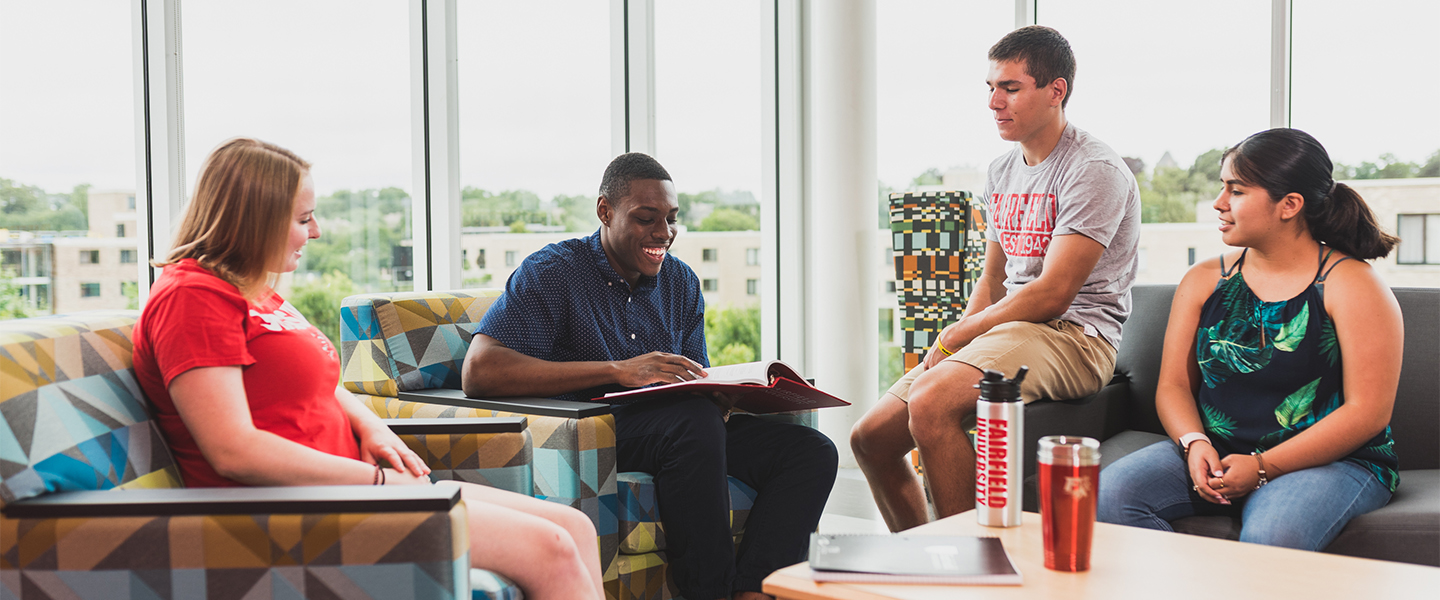
As a Jesuit, Catholic university, Fairfield is dedicated to diversity and inclusion; to radical hospitality in service of racial, social, and economic justice.
Student Activities
A student majoring in physics at Fairfield University has excellent opportunities for learning and maturing — both intellectually and professionally. Some of the more noteworthy of these opportunities include:
- A close-knit relationship with other physics majors and with faculty who are routinely available to mentor students in class, in their offices, and in research laboratories
- The opportunity to participate in the student-organized Physics Club, which arranges for various hands-on projects, guest speakers, and field trips
- The opportunity to join the Society of Physics Students and the Physics Honor Society (Sigma Pi Sigma). These two organizations are student sections of the American Physical Society which numbers more than 40,000 members nationally and internationally
- For qualified students, the opportunity to participate in the Honor's Program at Fairfield University, and for students with an exceptional academic record of achievement, the opportunity to be elected to the country's premier honor society, Phi Beta Kappa
- Opportunities for summer research as paid research assistants on campus or in NSF-sponsored summer intern programs at other institutions throughout the country.
Faculty
The College of Arts and Sciences at Fairfield University is home to a vibrant community of engaged faculty, dedicated staff, and accomplished scholars devoted to the process of invention and discovery and excited by the prospect of producing knowledge in the service of others. Meet the dedicated members of our Physics Department.
